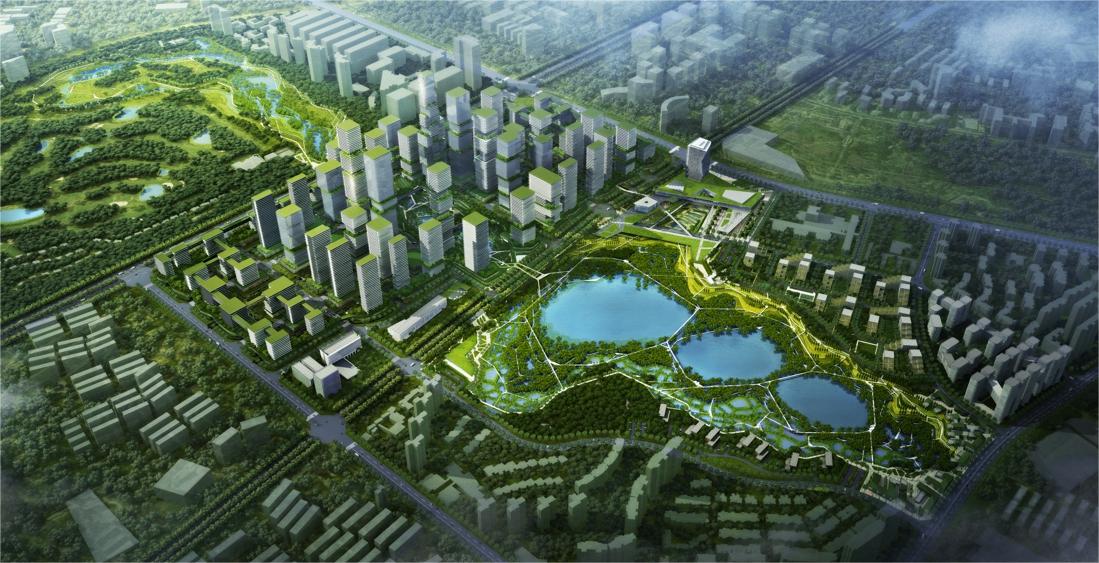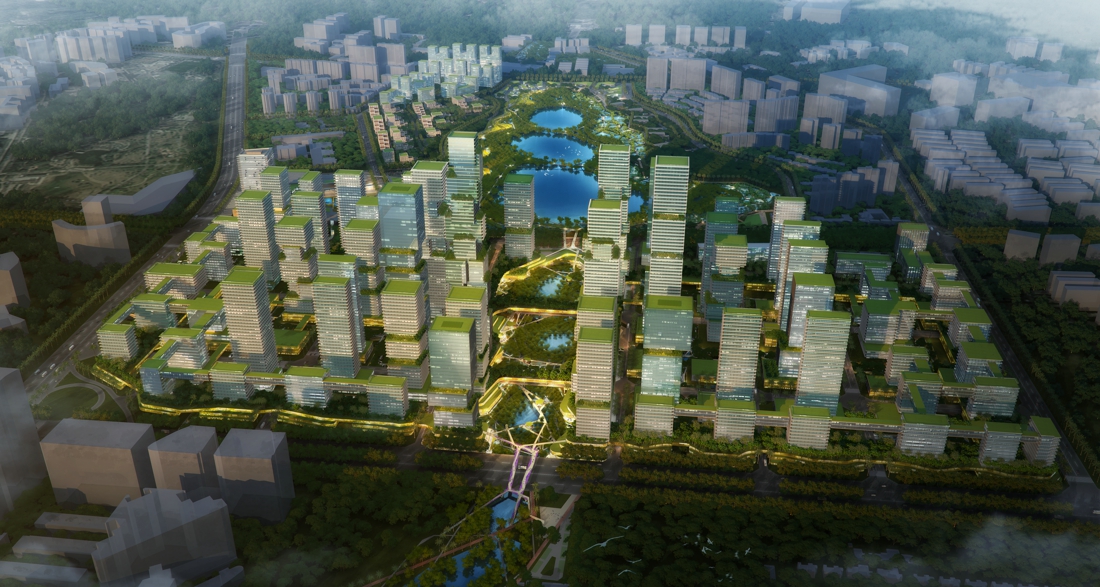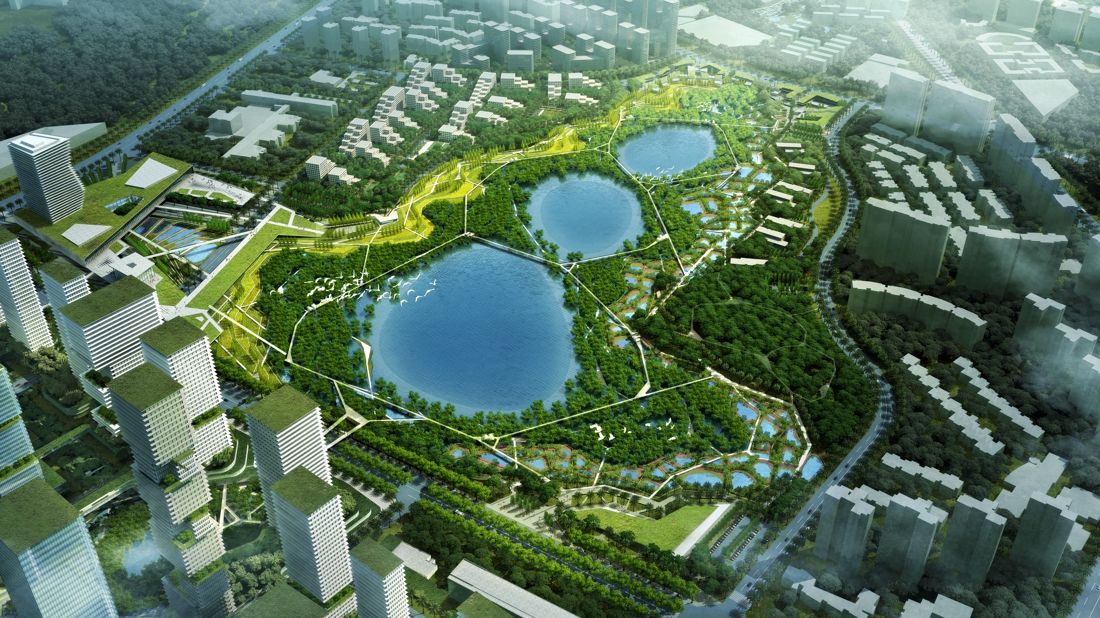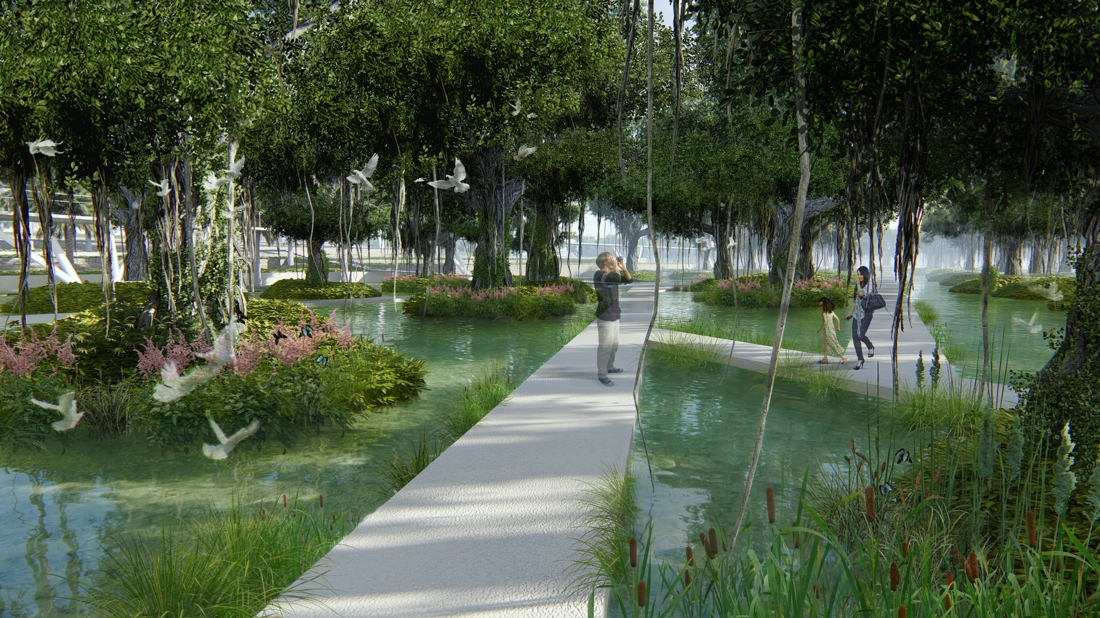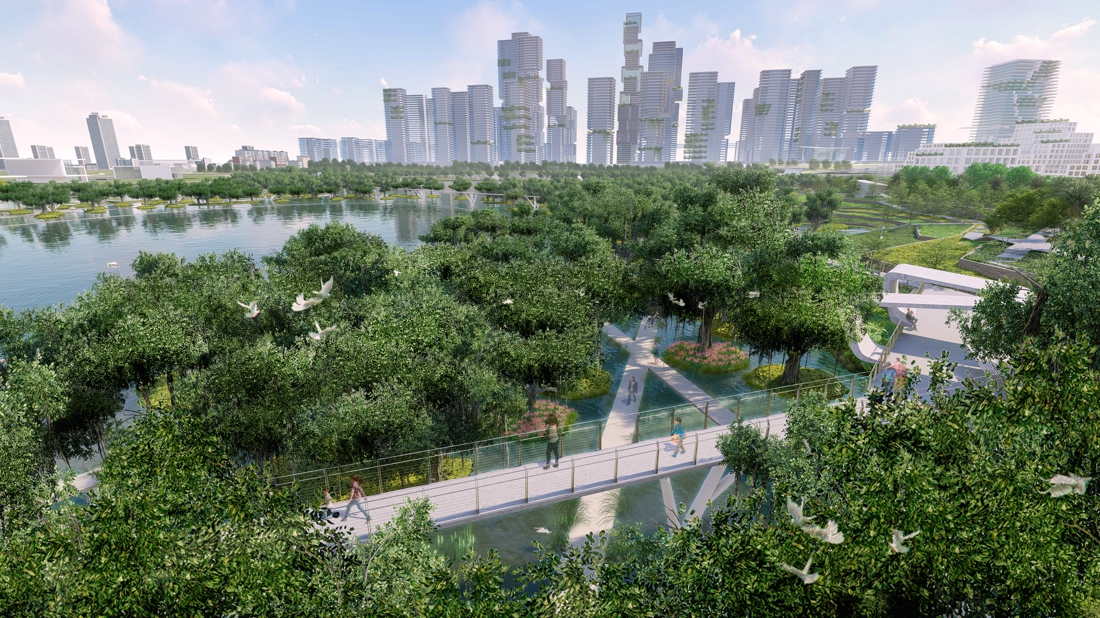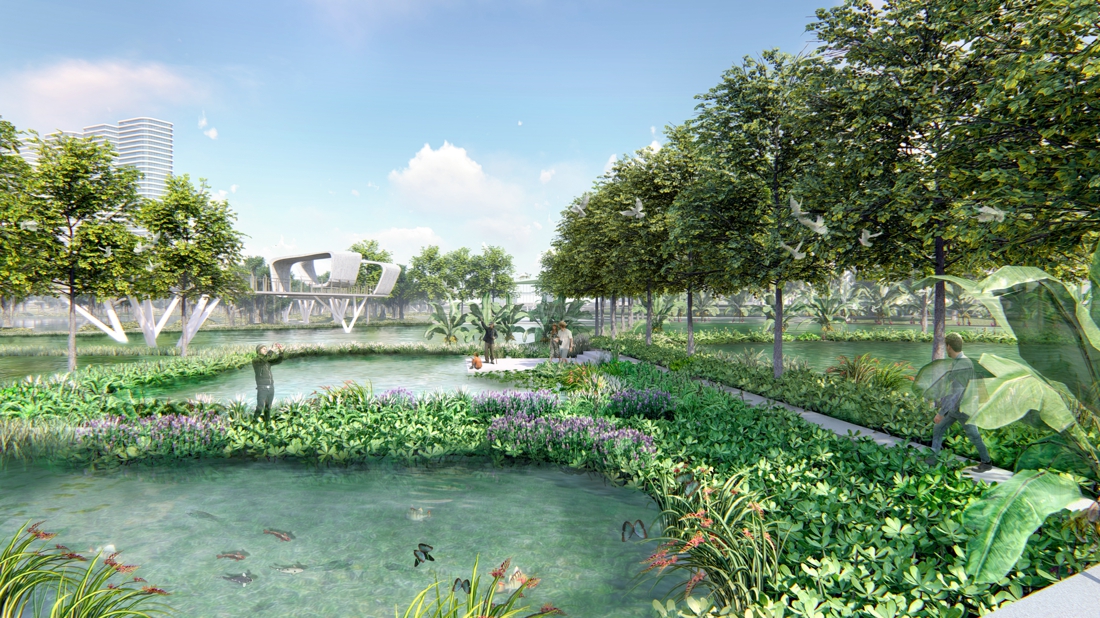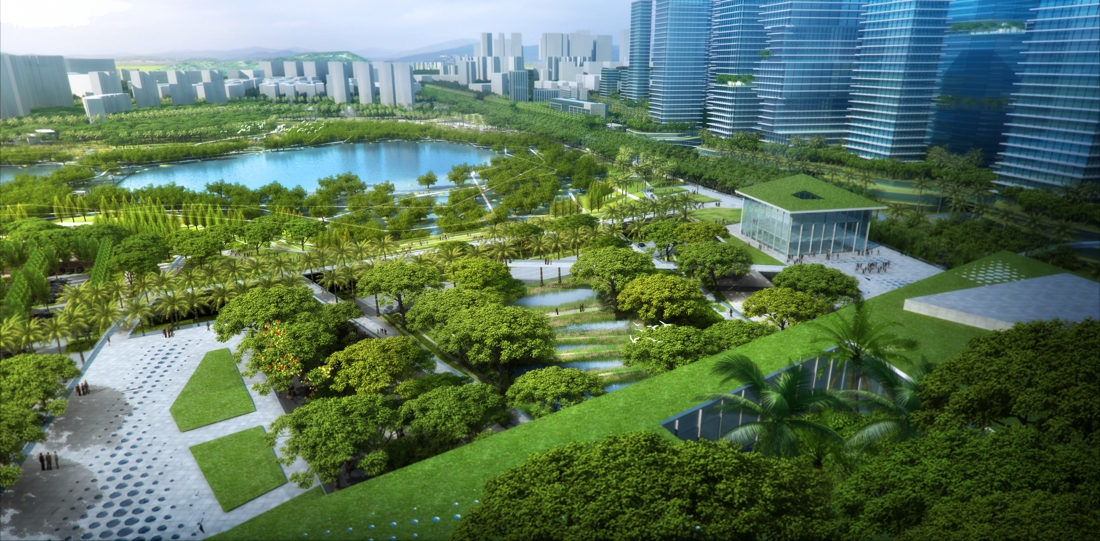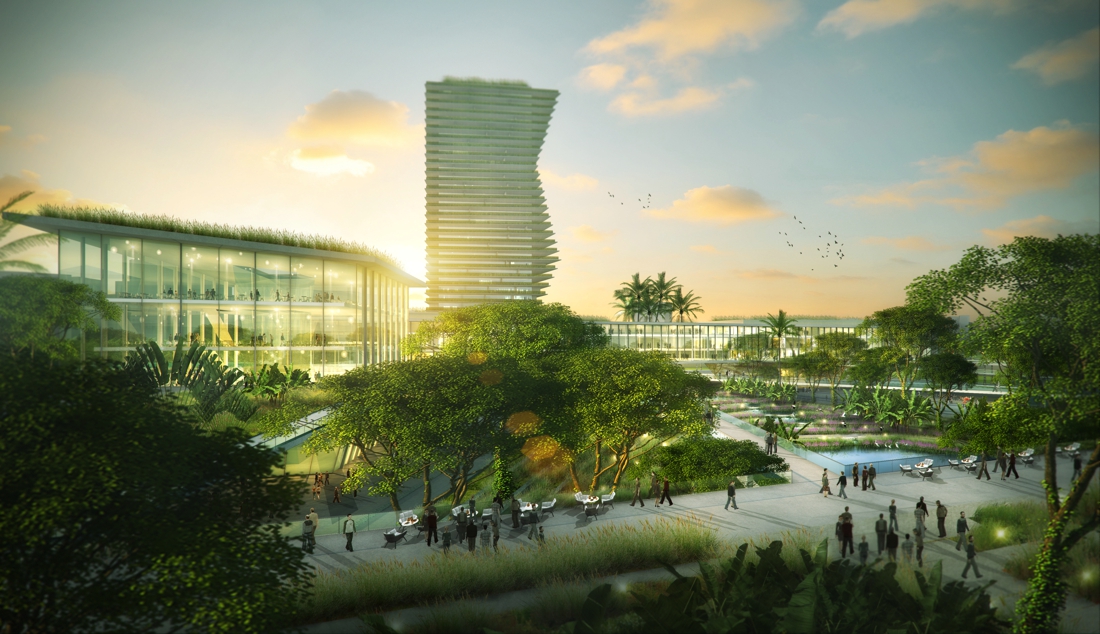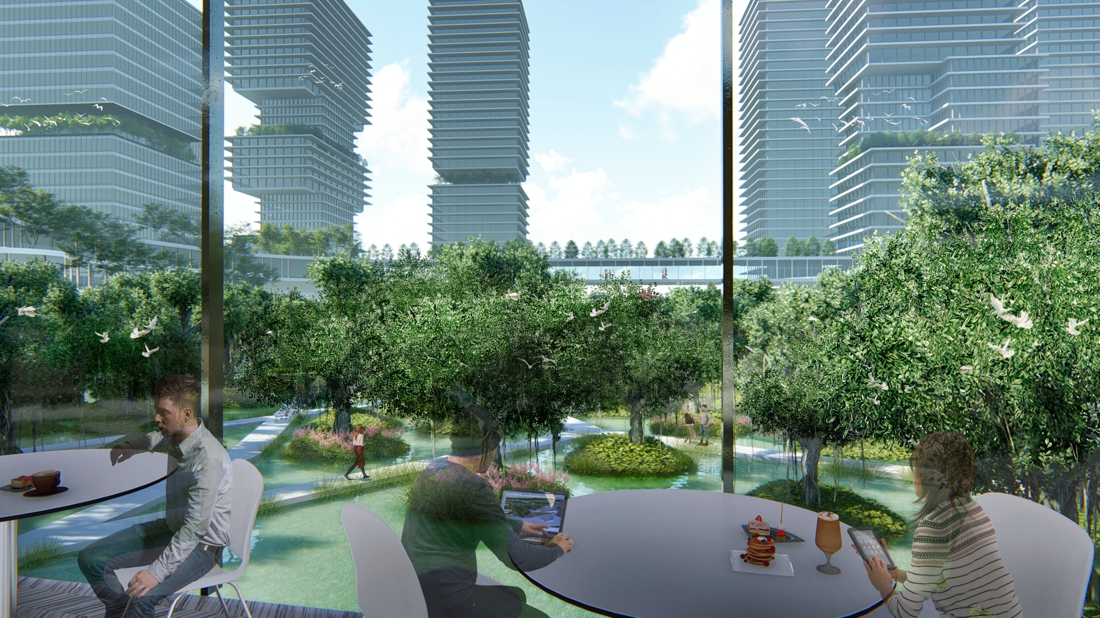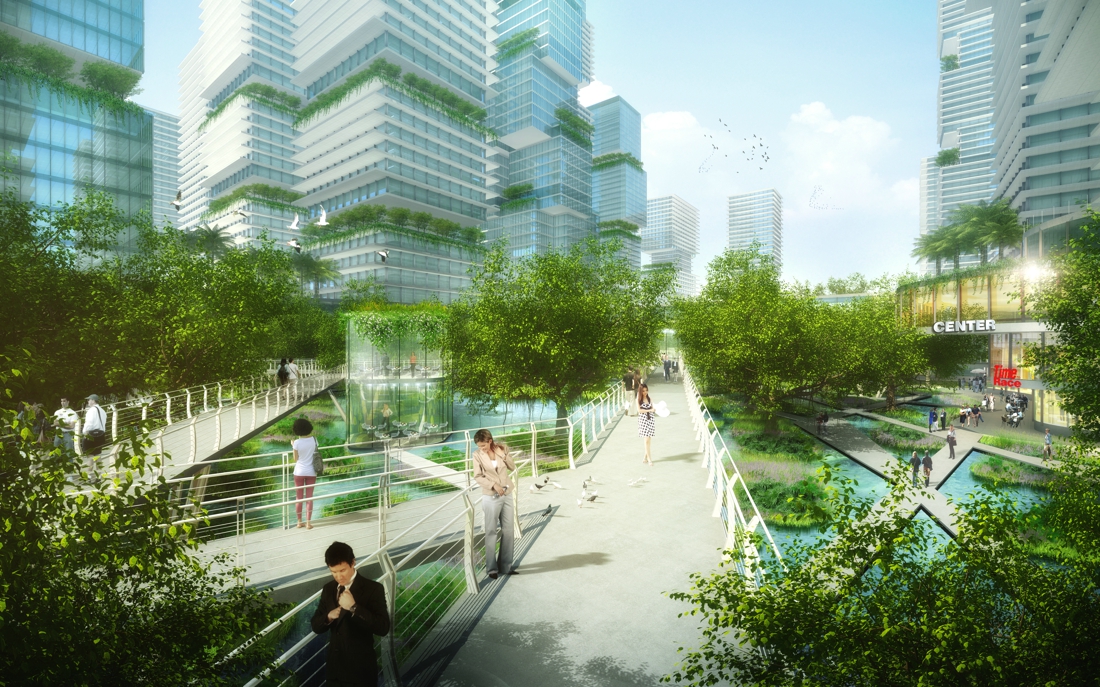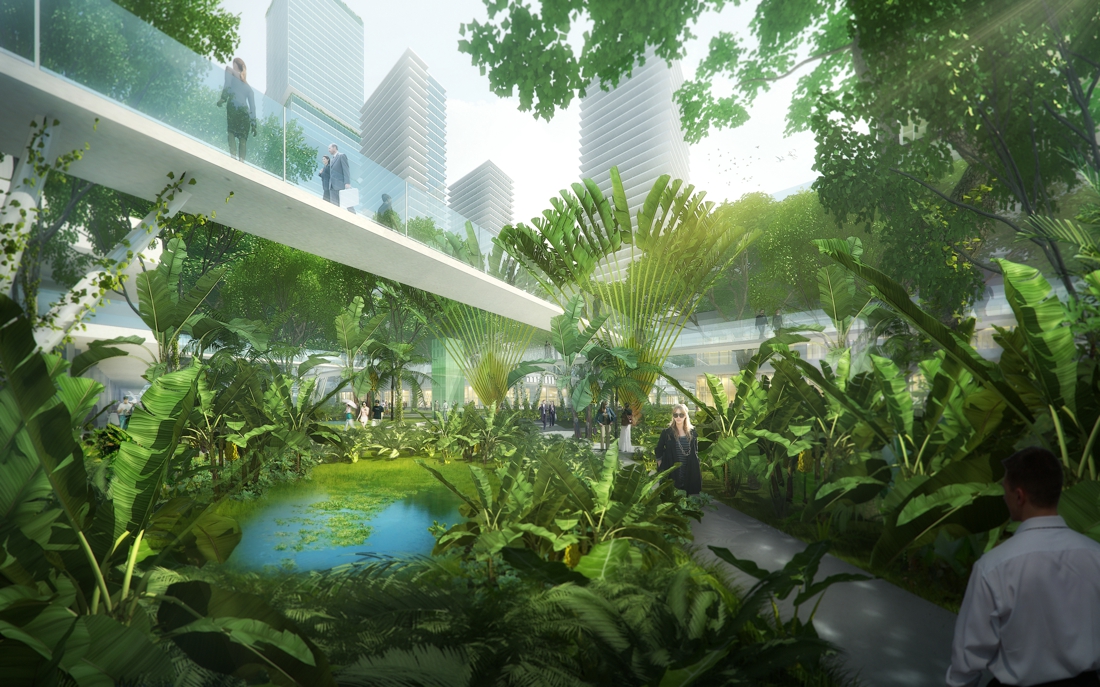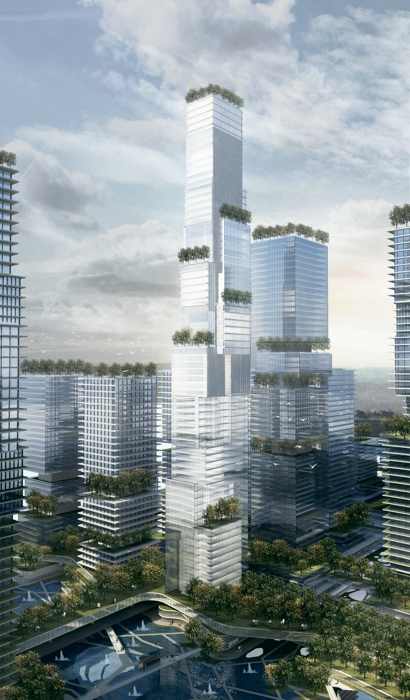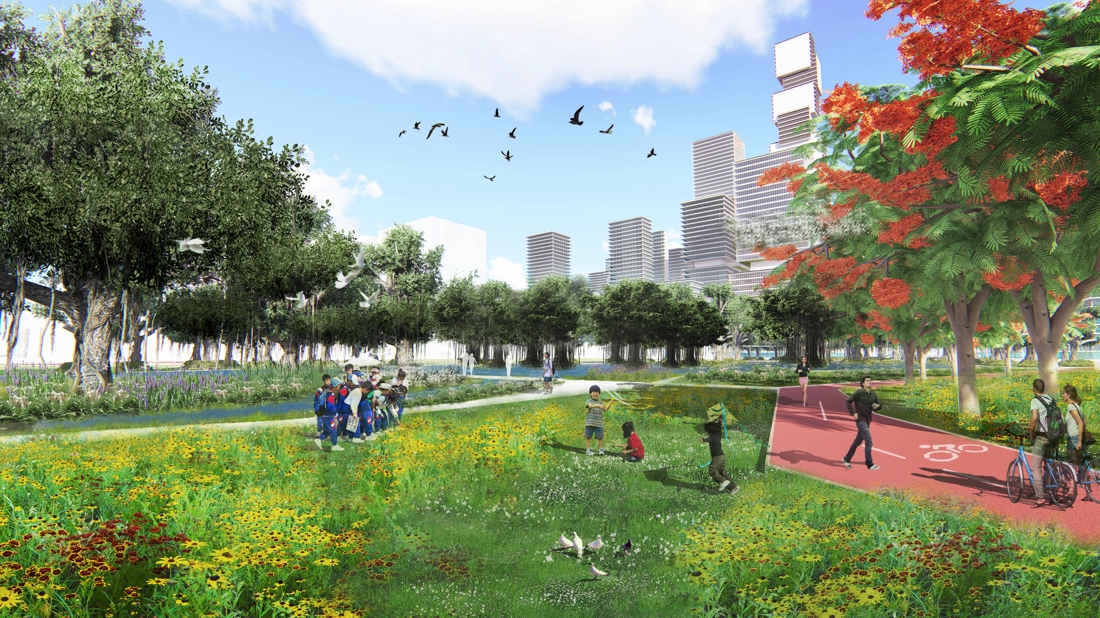Shenzhen Mixiang Lake Area Urban Design
Project Information
- Project Location:
- China Shenzhen, Guangdong
- Project Scale:
- 4.9 Square Kilometers
- Design Time:
- 2018
- Client:
- Urban Planning, Land & Resources Commission of Shenzhen Municipality (Oceanic Administration of Shenzhen Municipality)
Project Profile
1.Project Statement
The competition aims to develop a new vision and a new theme for the development of Xiangmihu Area in the new era, and foster the quality and character of a future city through systematic design approaches. For citizens in Shenzhen, it will offer a green and eco-friendly public urban place that promotes opening, sharing and cultural vitality; for the city of Shenzhen, it will create an ecological and sustainable urban area that combines the international standards with local characteristics and features a mixed uses including international exchanges and conventions, high-end finance, cultural creative industry, and vibrant commercial blocks.
Strategically situated at the core area of Shenzhen and in close adjacency to Futian CBD, Xiangmihu Area forms an important urban component along Shennan Avenue. As one of the well-known “Five Lakes and Four Seas” attractions in early-time Shenzhen, it has experienced and witnessed various urban development stages in the past four decades. Thanks to the prominently superior spatial pattern, supporting facilities and eco-environment, the Area boasts an eco-corridor connecting Futian with the mountains and seas, an important space for its future expansion, and a high-quality land reserve of strategic value in Shenzhen.
The site of the urban design competition includes the north, middle and south part of Xiangmihu Area. It extends to Qiaoxiang Rd on the north, Binhe Avenue on the south, Xiangmihu Rd on the west, and Xiangmei Rd and Xinzhou Rd on the east, totaling approximately 4.9 square kilometers. The scope of detailed urban design includes the north part and middle part of Xiangmihu Area, totaling 1.9 square kilometers.
Turenscape participated in this international competition, aiming to create a vision of “the city of the future” in the core area of Shenzhen. We try to organically integrate the ecological spaces and the living and working space in a smart district, and explore the possibility of recreate a natural “oasis” in the densely populated and intensively-built concrete city.
At present, we embrace the advent of the era of intelligence. We believe that the revolution in artificial intelligence will liberate people's brainpower and bring new opportunities for urban development: smart cars and new transportation systems can reduce parking areas by at least two-thirds and narrow the redundant roads. Intelligent stormwater management systems which creatively use redundant drainage pipelines to store water make the use of water resources more efficient and sustainable. Intelligent technology enables the generation of virtual dimensions. We no longer need to invest tons of construction resources and can borrow virtual reality to realize a variety of immersive space experiences. Intelligentization will liberate our physical space, which will no longer be overloaded with monuments and landmarks to flaunt the human accomplishments and wealth of the times, but can be returned to the beginning of all the stories and lives - NATURE.
Artificial cities are like illusory mirages, changing with each passing day, accommodating the ever-changing infinite creation of human beings.
Natural environment is the real oasis, which in slow succession is the constant reliance of human life.
——Nature is the only real world.
2.Objective and Challenge
The purpose of this urban design project is to create an “Urban Oasis, the Heart of Shenzhen” in the new era of intelligence.
Our design goals and challenges encompass the following five aspects:
1) In order to meet the requirements of the high-intensity development and construction of the city center, the ecological green line will be reserved, and the ecological foundation will be laid down. An eco-corridor between the mountain and the sea is created to recover natural environment and especially stormwater shall be regulated through the area. - "The Oasis of Ecology".
2) Facing the huge traffic pressure, which will be brought by the high intensity of land use, the efficient and accessible traffic system should be built up, promoting traffic health, intelligent management, and slow traffic. – "The Oasis of Transportation".
3) In terms of urban space, the Area will advocate flexible functions and mixed development, to create flexible urban space. - "The Oasis of Urban Development".
4) On the basis of ensuring efficient operation of the financial district, a variety of cultural and artistic activities will be introduced to create a vibrant public space under rapid urban development. – "The Oasis of Culture".
5) Multi-level strategy will be formulated, to form an intelligent city system, which interacts with spatial elements and gives feedback in time. - "The Oasis of Intelligence".
3.Design Strategy
The design strategies can be concluded as below:
For developing ecological infrastructure: 1. recover eco-corridor between mountain and sea as the ecological infrastructure; 2. restore natural habitat and regulate hydrological security pattern.
For smoothing traffic organization: 1.redesign road network to optimize public transportation; 2. reorient green slow traffic routes construct 3D transportation system.
For renovating urban space: 1. redevelop industrial layout to promote flexible land use; 2. rediscover underground spaces for a more holistic above-ground landscape.
For recover cultural vitality: 1. reactivate cultural exchanges in new flexible spaces; 2. reinvent daily activities and festival events.
For reconnecting intellectual interaction: 1. reestablish management systems to create smart spaces; 2. realize terminal connection to activate interactive interfaces.
The design strategies for the “Northern Culture and Art Center”, a.k.a. “Waterfront Green Forest” are as follows:
1) Reconstructing the Lake: Soften the existing revetment with ecological embankment. Deepen the central part of the reservoir to store water, and enable creation of larger shoal at the periphery. Create terraces and ponds alongside the lake to form a complete ecological sponge system.
2) Protecting the Water: The central lake manages excessive stormwater to balance the water volume. The terraces and ponds purify pollutants to ensure the water quality.
3) Reviving Landscape Vitality: The shoal is fully planted to form a waterfront forest. Boardwalks intertwine between the trees, allowing citizens to enjoy the nature. Eco-friendly buildings are integrated into the landscape, creating a waterfront green active zone.
The design strategies for the “Central Financial and Business Center”, a.k.a. “Financial Green Valley” are as follows:
1) Creating Sunken Green Valley: The green sponge corridor extends and sinks down when coming into the financial district, forming wetlands to regulate stormwater and floods.
2) Interweaving Green Lanes: The central green valley penetrates into both sides, forming an interwoven green net.
3) Constructing Three-dimensional City: The sunken green valley, corridor bridges and roof gardens, together form a holistic three-dimensional city as a sky-garden.
The design strategies for the “Sourthern Public Civic Park”, a.k.a. “Open Green Park” are as follows:
1) Returning Nature to People: The design transforms the existing private golf course into a public open park to provide citizens with more green recreational spaces.
2) Recovering Sponge System: The design connects water bodies, preserves existing trees to form pleasant microclimate and ecological stormwater management system.
4.Conclusion
The design connects the northern mountain with the southern sea, recovering Xiangmihu Area as an ecological OASIS inside the city. It recovers hydrological cycle by managing rainwater to create basis for ecological sponge system; reconnects eco-corridors by planting trees to form passages for ecological recreation; relinks slow-traffic by establishing shared-use pathways to provide multiple options for non-motorized traveling.
The overall design vision can be concluded in the following verse:
The green OASIS as part of sponge city, creates a corridor between the mountain and the sea:
Deep lake with shallow shoal, manage the rise and fall of the water level.
Ancient Lingnan wisdom, is revived through recovered forest on the water.
Intertwined boardwalks, enable enjoyment of cool breezes under forest shadows.
Cultural and creative communications, inspire colorful activities at the waterfront.
Sunken green valley, attracts business elites towards the financial district core.
Corridor bridges, interlink skyscrapers as a holistic three-dimensional sky-garden-city.
Interweaved green lanes, decorate the sapphire sky with emerald leaves.
Flexible urban functions, allow smart urban development to revive the city.
Like a long lost blue-green necklace, the nature is recovered and returned to the people.
The mountain-and-sea corridor, reconnects the north and the south.
Green forest, green valley, and green park, reactivate a paradigm of ecological intelligence.
